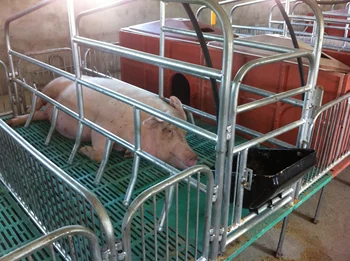chicken poultry cage
Nov . 23, 2024 04:16 Back to list
chicken poultry cage
The Impact of Chicken Poultry Cages on the Industry and Animal Welfare
In recent years, the poultry industry has accelerated its focus on optimizing production efficiency, leading to the widespread adoption of chicken cages. These structures have become a crucial element in the raising of chickens, particularly in the egg-laying sector. However, the use of chicken poultry cages has sparked a global discussion that revolves around two critical aspects the economic benefits they provide to farmers and the ethical implications regarding animal welfare.
Chicken cages, particularly battery cages, are designed to accommodate multiple hens in a confined space. This method of farming allows for streamlined management, easier access for feeding, and the effective collection of eggs. From an economic standpoint, the advantages are significant—less labor is required to manage a larger number of birds, and the conditions can be controlled to optimize egg production. This efficiency has led to lower prices for consumers and increased production rates for farmers. According to the American Egg Board, modern production methods can yield up to 300 eggs per year from a single hen, demonstrating the level of efficiency that caged systems can achieve.
However, the economic benefits of chicken poultry cages come at a considerable ethical price. Critics argue that placing hens in restrictive environments severely impacts their well-being. In battery cages, hens are often confined to spaces so cramped that they cannot engage in natural behaviors such as spreading their wings, nesting, or perching. The welfare of these animals is increasingly being called into question, leading to further scrutiny and public outcry. Animal advocacy groups, such as the Humane Society International, have been vocal about the need for more humane alternatives to conventional caging systems.
As a response to these concerns, some countries have begun to implement regulations aimed at improving the welfare of hens. In the European Union, legislation has introduced minimum space requirements and phased out the use of traditional battery cages. Similar movements are gaining traction in places like California, where Proposition 12, passed in 2018, mandates more humane living conditions for farmed chickens. These changes are indicative of a growing awareness of animal rights and the responsibility of farmers to provide better living conditions for their livestock.
chicken poultry cage

The shift from battery cages to more humane alternatives—such as enriched cages or cage-free systems—also reflects changing consumer demands. A significant portion of the public is now willing to pay a premium for eggs produced through more ethical farming practices. This trend has spurred many producers to remodel their farming methods to align with consumer preferences, which in turn influences market dynamics. The growth of organic and free-range egg production exemplifies a shift towards more sustainable and humane practices catered towards conscientious consumers.
Nevertheless, transitioning to cage-free systems presents economic challenges for many farmers. Cage-free production may require higher investment for housing and management while also leading to a decrease in egg production due to the natural behaviors of birds, which can lead to competition and increased stress among flocks. As a result, farmers face a delicate balancing act between meeting ethical standards and maintaining profitability.
Future innovations in poultry farming might also play a significant role in addressing the tension between animal welfare and economic efficiency. Technologies such as automated systems for monitoring health and behavior could allow farmers to raise chickens in less restrictive environments without sacrificing productivity. Research into alternative farming methods, such as free-range or pasture-raised systems, may lead to more sustainable and ethical ways to produce eggs while catering to consumer demand.
In conclusion, the use of chicken poultry cages presents a complex interplay between economic efficiency and animal welfare. While these systems have undoubtedly revolutionized poultry production, they raise critical questions about the treatment of animals and the definition of humane farming practices. As society becomes increasingly aware of these issues, the pressure for change will continue to grow, prompting farmers, policymakers, and consumers alike to seek solutions that ensure both the sustainability of the poultry industry and the well-being of its inhabitants. Ultimately, finding a balance that respects the rights of animals while meeting consumer needs will be vital for the future of poultry farming.
-
Hot Sale 24 & 18 Door Rabbit Cages - Premium Breeding Solutions
NewsJul.25,2025
-
Automatic Feeding Line System Pan Feeder Nipple Drinker - Anping County Yize Metal Products Co., Ltd.
NewsJul.21,2025
-
Automatic Feeding Line System Pan Feeder Nipple Drinker - Anping County Yize Metal Products Co., Ltd.
NewsJul.21,2025
-
Automatic Feeding Line System - Anping Yize | Precision & Nipple
NewsJul.21,2025
-
Automatic Feeding Line System - Anping Yize | Precision & Nipple
NewsJul.21,2025
-
Automatic Feeding Line System-Anping County Yize Metal Products Co., Ltd.|Efficient Feed Distribution&Customized Animal Farming Solutions
NewsJul.21,2025






